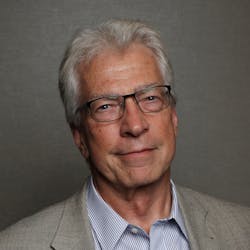
I recently heard a fascinating lecture by Seth Lloyd, director of the W.M. Keck Center for Extreme Quantum Information Theory at MIT and author of Programming the Universe, which describes how the universe computes using an intricate dance of energy and information. Since quantum mechanics is not intuitive, to put it mildly, I suspended disbelief and enjoyed his description of a universe that, to quote physicist Robert Oppenheimer, "is not only queerer than we suppose, but queerer than we can suppose."
More to the point of this issue, Seth Lloyd is the first person to develop a realizable model for quantum computation and is working with several groups to construct and operate quantum computers and communication systems. These "groups" have included the National Security Agency, which explained to Lloyd that its job is to protect the U.S. and the encrypted security of its communications—so they did not want a quantum computer to exist at all since it could crack the code, but if one is going to exist, they want the first. Our contributing editor Jeff Hecht picks up on this motivation in his cover story and goes much further to explain the different approaches to qubits and other building blocks for quantum computing (see page 29). Indeed, as Jeff tells it, quantum computing promises someday to be a very powerful tool for more applications than cracking digital encryption codes.
And while quantum computing may lie at the far edge of photonics, more classic optical and laser tools continue to help in practical ways. In the issue you'll find stories on topics such as industrial microscopes (see page 47), fiber laser MOPAs (see page 41), laser diode operation (see page 56), and optics damage from high-power lasers (see page 35). There's also a good article on miniature self-actuated robots or "Starbugs" (see page 52) that are enabling a new generation of giant telescopes to probe the endlessly enthralling universe.
About the Author

Conard Holton
Conard Holton has 25 years of science and technology editing and writing experience. He was formerly a staff member and consultant for government agencies such as the New York State Energy Research and Development Authority and the International Atomic Energy Agency, and engineering companies such as Bechtel. He joined Laser Focus World in 1997 as senior editor, becoming editor in chief of WDM Solutions, which he founded in 1999. In 2003 he joined Vision Systems Design as editor in chief, while continuing as contributing editor at Laser Focus World. Conard became editor in chief of Laser Focus World in August 2011, a role in which he served through August 2018. He then served as Editor at Large for Laser Focus World and Co-Chair of the Lasers & Photonics Marketplace Seminar from August 2018 through January 2022. He received his B.A. from the University of Pennsylvania, with additional studies at the Colorado School of Mines and Medill School of Journalism at Northwestern University.